Why build a startup program?
1. Revenue expansion from your successful customers
Large companies such as Airbnb and Dropbox moved through incubators when they were still small businesses. A startup program is your chance to catch the next wave of large businesses early and to grow with them.
2. The startup program can become a lead source
Once you have on-boarded enough members with a portfolio relevant to your product, you can attain a constant lead flow through your startup program.
3. Increased brand awareness and promotional partnerships
Incubators, Accelerators and VC firms can offer many opportunities to promote your brand through internal and external listings, events, knowledge sharing and recommendations by members and partners.
Initiating a startup program is easier than you think and will cost little to setup and maintain. This guide outlines the steps how you can build your own.
Step 1: Value proposition
The first thing you want to do is to think about the value proposition as well as the conditions. Answering these questions might help you define both:
- Why should a customer join this program?
- What makes this program exclusive?
- How long will the program be?
- How much of a discount is being offered?
- What profile does the customer need to have to be eligible to join?
Be brief and specific to make it easy for the customer to understand the conditions. You want the program to be perceived as exclusive and beneficial by laying out actionable outcomes which the customer will get from using your product.
Step 2: Landing page

The next step is to build a dedicated landing page to promote your startup program. An effective landing page should include the following elements
- Value proposition
- Conditions
- List of a few key customers from the verticals you service
- Quote from customer or thought leader that demonstrates value
- List of supported incubators
- Sign-up form
This landing page will enable you to market the startup program to potential customers as well as potential incubators.
Important: Make sure you include a field that prompts a potential customer to supply a contact at their current incubator if it is not currently listed. This helps you to capture incubator leads from potential customers that are already interested in using your product. This is a great incentive for an incubator to agree to join your program.
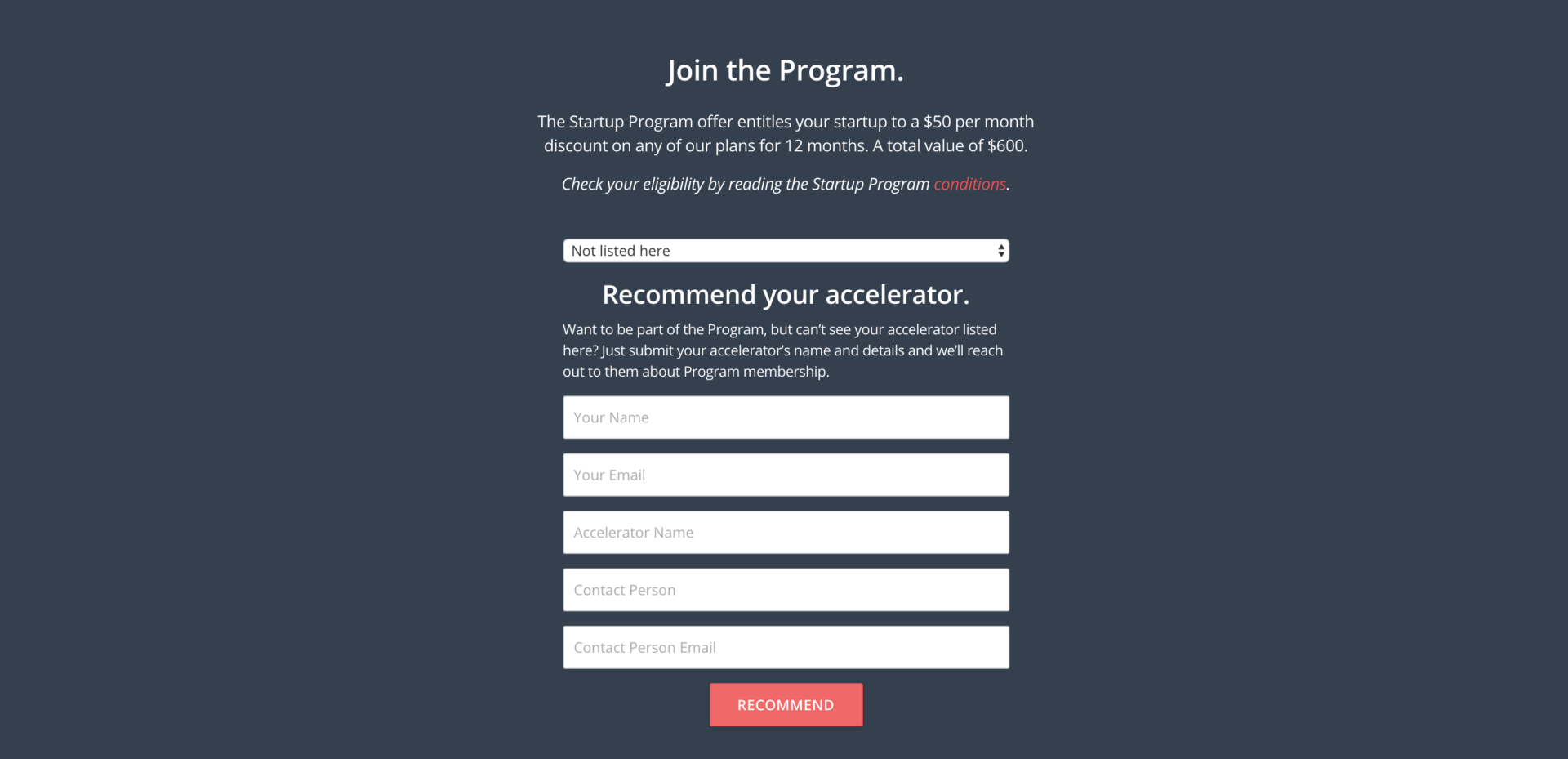
Route the form submissions through to your CRM so that you can easily manage and measure the conversations. At Chartmogul, we forward the data captured by the form submission to our Zendesk account. By adding a tag in the process, we can automatically categorize and route the ticket to the relevant party.
Check out our 2017 SaaS Landing Page analysis for further ideas on how to build startup program landing page. We deconstructed the common elements in the landing pages of over 100 top SaaS companies!
Step 3: Incubator outreach
The last step to get started is to research incubator programs that are suitable for your business in order to build a list for your outreach. You want to target incubators that have a sizable portfolio of the verticals your product aims to serve. I would recommend not only focusing on incubators and accelerators but to also target larger VC firms.
I keep two lists for this in Google Sheets. One for incubators that I am already talking to or am planning to contact. The second consists of incubators that I have successfully on-boarded. Any CRM will also do to manage these lists and relationships.
Promotion (spreading the word!)
Now that the ground work has been completed, it’s time to tell the world about your awesome new startup program!
To speed up the outreach, I would recommend preparing a number of macros for the common scenarios that you will encounter
- Incubator, accelerator, VC outreach first contact
- Follow-up with no response
- Scheduling call with incubator
- Onboarding incubator
- Onboarding customer

You can adjust these macros as you learn the kind of messaging that’s most effective.
Tip: One of the best ways I found to reach out to incubators is via introductions through your personal network or the network of your colleagues. Telling your team about your new startup program might surface a wealth of existing contacts you can utilize.
Here are a few other key learnings that will help you spread the word:
- Ask your paying and potential customers for introductions to incubator programs they are part of.
- Turn those working in a customer facing role in your company into active promoters of your startup program.
- Ask the contact within an incubator that you have on-boarded already for recommendations to other incubators that could benefit. The best time to do so is right away when they have agreed to join your program.
- Most incubator programs have a person that is in charge of offers which is the best point of contact.
- Promote your startup program to potential customers and new incubators during SaaS meetups as well as conferences.
- You can often find a contact form or email address on an incubators website but be prepared to not hear back from many that you try to reach out to via this channel.
The pitch
“You will usually only get one opportunity to make your pitch. If you don’t garner enough interest during this conversation, chances are that your follow-up emails won’t be returned.”
You might find that a good percentage that you contact or talk to in person will want to get on a phone call to learn more about your offer. Have a strong distilled value proposition ready that explains how their portfolio can benefit and be ready to give a product demo on the spot.
While you have them on the call, you want to ask them for the things you need to complete the next step. You might want to ask for the incubators logo so that you can add the top ones you on-board to your startup program website. You could also ask them to tweet about the new partnership and offer to do the same. You will usually only get one opportunity to make your pitch. If you don’t garner enough interest during this conversation, chances are that your follow-up emails won’t be returned.
Step 4: Incubator on-boarding
Once your conversation was successful and you are ready to on-board an incubator, you can send your welcome packet to your contact by email. Sometimes there will be custom requirements your contact might need to share your program with their members. Many incubator programs have an internal offering web page that only they can access. Some might give you access to it so you can post up the data about your program yourselves. Others fire out a quick email to all their portfolio companies or message a select number that they think can benefit most from your offer.
A good starting point would be to include the following in your welcome packet template:
- Description of your service with screenshots
- Company logo
- Offer description
- Redemption method
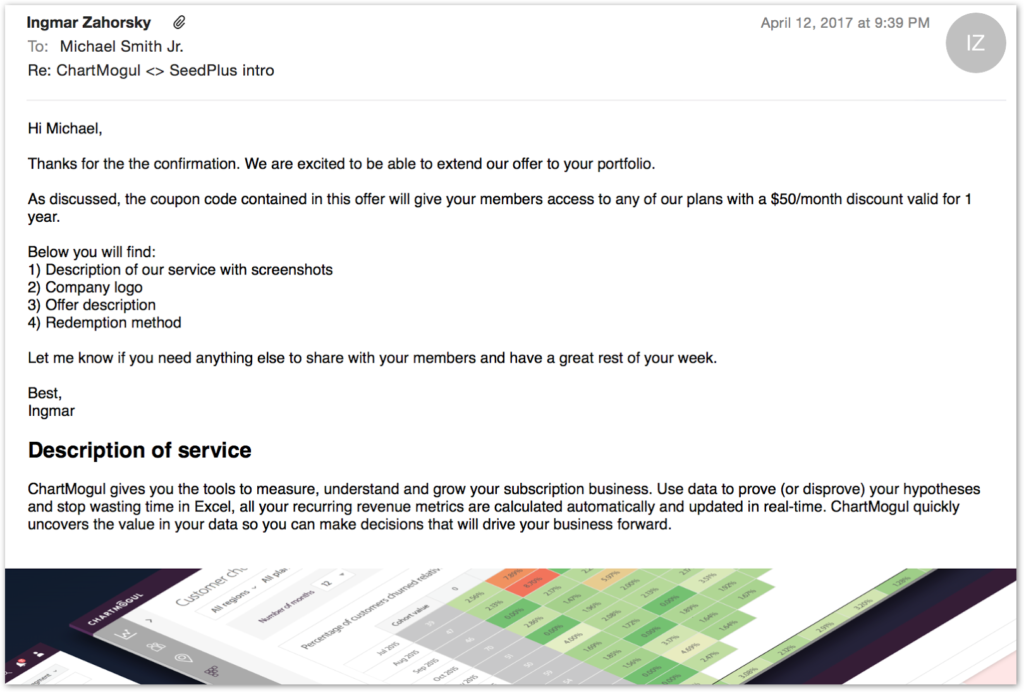
I would recommend having program specific coupons so that you can easily track where a lead came from later on.
After I send out the welcome package, I add the name of the new member to the list of supported incubators on our startup program’s website.
In the final step of on-boarding, I share the new incubator member and a link to their website with our team. I fire out a tweet and LinkedIn post announcing the new partnership. I also add the contact(s) at the incubator as a new LinkedIn connection.
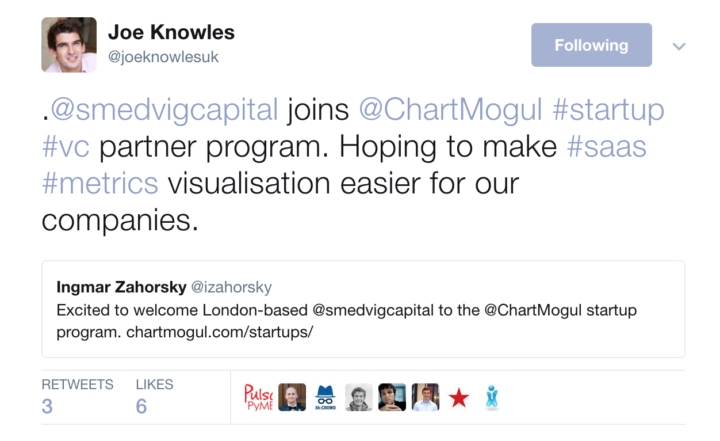
Maintenance
To maintain your startup program keep your members updated of changes, visit your incubators and accelerators when possible and carefully manage the retention cycle when your customers transition off the startup program losing their discount.
Touch base with your incubator contacts whenever you have plans to visit their town to see if you can present to their portfolio. Many incubators love hosting events for knowledge sharing which is a great way to build your brand through education without directly trying to sell anything.
To manage retention, pick a time at least a month ahead of the expiry of the startup program to see if there are any sticking points that would discourage your customer to renew at the non-discounted rate. We manage this process in our Sales CRM Close.io.
Goals and KPIs
In order to define what you want to accomplish with your startup program, I would recommend setting some clear goals and to establish KPIs that you can track from the beginning in order to see how they evolve over time.
For example, your goal could be to on-board a certain number of incubators in x amount of time while on-boarding x number of customers onto the startup program.
In terms of KPIs, you could track the following in your subscription analytics platform:
- Lead volume
- Customer number
- Retention rates at end of startup program
- Retention rates by incubator
- Average expansion per account
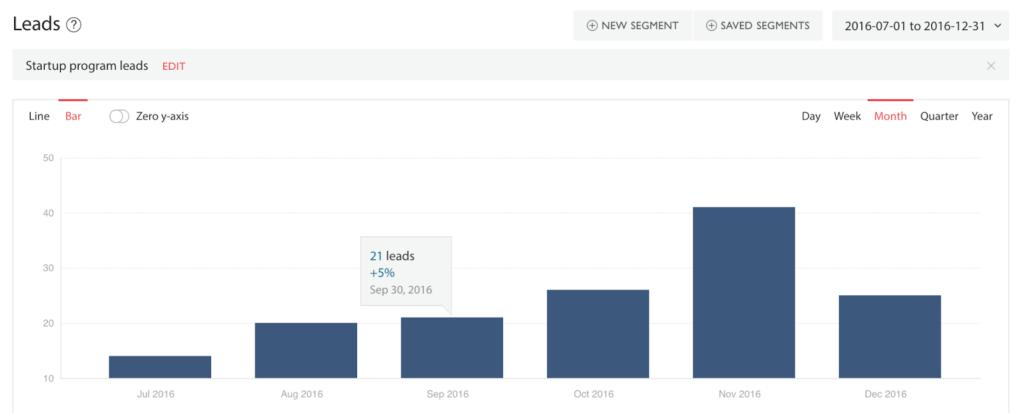
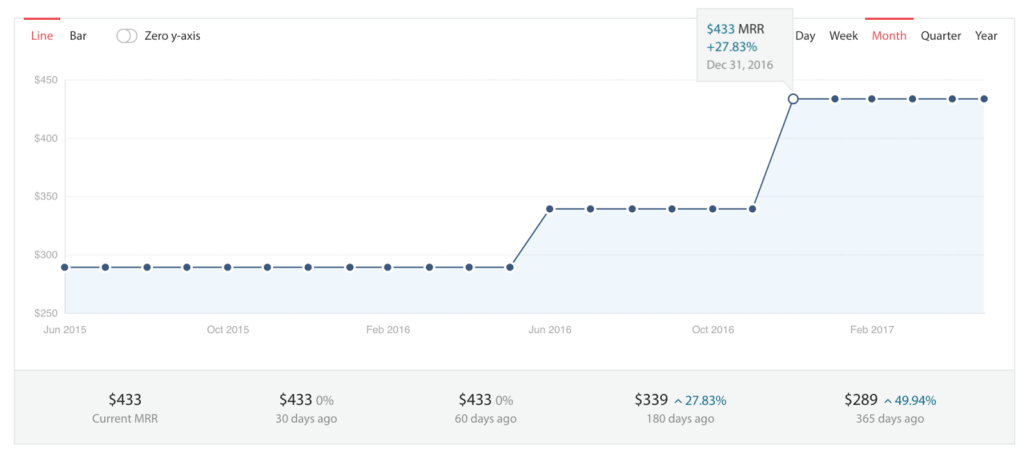
In order to track these different metrics in ChartMogul, I added an attribute with the startup program they are on to the customer. I obtained the list of the customers who have used a particular coupon from the billing system.
Takeaways
Setting up a startup program is a long term investment in your business. It gives you an opportunity to attract early stage companies during a cash-sensitive stage. You will earn some positive brand awareness for supporting entrepreneurship which can easily translate into great word of mouth marketing. If done right, your startup program can blossom into a predictable revenue stream for years to come.
Join the discussion
Have you build your own startup program and have some learnings to share? Do you have some comments, feedback or opinions on the subject? We would would love to hear about them in the comments below!

